The State and Future of Twitter was revealed to the world at the Chirp Conference. Developers, futurists, reporters, investors, stakeholders, and businesses convened at the Palace of Fine Arts in San Francisco, making the journey from all over the world to witness history in the making.
My experience at Chirp was in a word, profound. I sit here, right here, right now, attempting to distill all that I heard and learned and its true effect on the general public. The volume of ideas and insight is implausible to capture, analyze, and share in one post. Hence, what follows is Part One of The State and Future of Twitter, beginning with an answer to the question that Twitter never asked of us, “What moves you?” While some of what you’ll read addresses the initial question, “what are you doing” and also the current question, “what’s happening?”
Prior to the opening of the show, tensions arose between Twitter and the developer community following the news of Twitter’s acquisition of Tweetie to become the official iPhone app for the company. Suddenly developers felt abandoned or threatened by an ominous competitor, Twitter itself.
On the eve of the conference, Twitter was faced with one additional objective for its monumental event. In addition to illustrating its future, Twitter now desperately needed to win back the support and dedication of its developer community.
“Twitter has always been about developers,” asserted Twitter co-founder Evan Williams.
Williams continued, “Twitter is the ecosystem much more than any other Web service that exists. You guys have not only made Twitter better, you’ve helped shape it, you’ve helped define what it is for us and millions of users.”
In truth, the stories and events that played out paint a brighter future for all involved, including consumers. What was clear, however, is that the days of straightforward and spiritless applications would no longer command the value and attention they once boasted. It was clear that Twitter is rapidly emerging as a sophisticated social operating system (OS) and its prospective is governed by the applications and the users who adopt them.
Follow Me on Twitter!
Since 2006, I’ve explored the promise and impact of Twitter on media, marketing and popular culture. At times I’ve openly questioned decisions or the lack thereof to diagnose complications with Twitter’s market position as compared to its promise. Reality eventually proved blinding. Consumers were and are unabashedly exposed to Twitter at almost unprecedented and incalculable conditions.
Follow us on Twitter…it’s suddenly everywhere. Whether you’re watching the evening news, your favorite program or the commercials that support them, the request is clear. However, what was unclear, especially for the everyday consumer, were the steps necessary to find meaning in the Twitter experience and direction in its personal application in a world where Facebook and other social networks offered far more definitive and self explaining advantages.

As Evan Wlliams demonstrated through a live Google search, it’s clear that they’re listening. Mainstream consumers do not understand Twitter.
“Getting users from awareness to engagement–this is something that we weren’t doing very well. This is a really tough problem because Twitter is different things for different people.”
Indeed.
Most importantly however, what it isn’t for most people, is clear in its day-to-day application and benefits for the investment one makes in learning, contributing, and overall engagement.
Twitter has tried, albeit incrementally as well as restricted and perhaps without clarity, to improve the experience.
In the last year, the company has…
1. Re-designed its home page twice to more effectively depict the value that lies beyond registration.
2. Created a series of guides designed to help businesses understand the potential rife within its ecosystem
3. Analyzed and published data to humanize the trends beyond the tweets
4. Continually spotlight the clever accounts finding success
At 175 employees, Twitter might now finally realize the strength in its own numbers.
Tweet by Numbers
It would take almost four years for me to witness the day that Twitter would convincingly recognize its calling in life and as a result, take the wheel of destiny to steer a historic, yet seemingly meandering movement toward relevance and prevalence.
On April 14th 2010, Twitter made history…again.
The news, ideas, and conversations erupting from the conference was positively overwhelming and promising, almost as if the team at Twitter suddenly awoke in the middle of the night to seize the revelation that presented its destiny, mission, and the course towards pervasiveness.
On the first day of its first official conference, Twitter intentionally positioned Chirp as its shot across the bow of skeptics and critics while simultaneously rekindling the flame of loyalists and luminaries.
A community once plagued by user acquisition and retention challenges, Twitter disclosed information absent since its debut in 2006, numbers.
It turns out, Twitter is much larger than many predicted. According to co-founder Biz Stone, Twitter maintains a user base of over 105 million. To be clear, registered and active users are two very different things. But even speculating at a 50% retention estimate, just over 50 million active accounts would warrant significant respect and attention.
Biz also shared that Twitter.com receives over 180 million monthly unique visitors with 75% of Twitter traffic sourcing from outside applications. Currently, Twitter is adding 300,000 new users daily, experiencing 1,500% growth over last year.
Twitter search is also becoming a contender in the overall market. While still far behind Google and even YouTube, Twitter is fielding over 600 million search queries with 3 billion calls to its application program interface (API) per day.
Snapshot:
– 105 million registered users
– 180 million monthly unique visitors
– 75% of traffic sourcing from outside applications
– Adding 300,000 new users daily
Twitter: A Cultural Catalyst
Over the last few years, Twitter users publicly explored and defined the role of the fledgling platform as a technology, a communications medium, and ultimately as a catalyst for societal evolution. At a minimum, Twitter has represented a collective collaboration that manifests our ability to unconsciously connect kindred voices through the experiences that move us. While Twitter both spawned and symbolized the pulse of the real-time Web, Twitter itself emerged as a human seismograph, providing us with a window into the reverberating events, themes, and trends that captivate digital civilizations.
In March 2007, Twitter tasted mainstream attention when it earned the spotlight at SXSW.
In 2008, a journalist was arrested in Egypt and his Tweets that alerted followers to the event and broadcast his cry for help would ultimately serve as the key to his freedom.
Just over a year ago, Ashton Kutcher challenged CNN to a Twitter race to become the first person to reach 1,000,000 followers.
In June 2009, the Iran election and the following political unrest were globalized through Twitter.
From its inception to its current state is entwined through countless human experiences and events ranging from earthquakes to plane crashes to triumphs, losses, and everything in between.
The Twitterverse represents much more than a social network. It personified our aspirations, giving millions of people a stage for which to earn untapped recognition. Whereas YouTube inspired so many individuals willing to brave the lens of a Web cam and the resulting activities that ensured from friends and strangers online and in the real world, Twitter gifted a microphone, a stage, and a captive audience to those who could enchant our heats, minds, and attention in 140 character proclamations.
Twitter did not invent social networking. Nor did it create the @ or # signs that have become pervasive not only in Twitter and other social networks, but also in real life. What Twitter did however, seems to have a much more profound effect on humanity. As a noun and a verb, Tweets unlocked and emancipated our inner extrovert and social commentator, easing our concerns over privacy and consequence, instilling confidence through our participation and contribution with followers, responses, retweets, favorites, and ultimately a network of contacts that would prove invaluable in all things we do online and offline.
I’ve spent countless hours analyzing how the “me” in Social Media affects us individually. And while many have criticized blogs, Twitter, Facebook and other social networks for fanning the flames of egotism and narcissism, I truly believe that Twitter empowered a new generation of individuals to listen, learn, and communicate with vigor, consciousness, and passion. And every time we update our status, we earn status at varying levels that reflects the caliber and breadth of our investment and intention. As such, we are encouraged and rewarded by the deliberate unfastening of”self” from self interest to play a part in producing a vibrant and enriching civilization that transcends its populace from denizens to bona fide benefactor and stakeholder.
Twitter is what it is because of us. And, where it is going and its true impact will too, be defined by us, the very people who form the democracy of Twitter. As good friend and digital raconteur Stowe Boyd observed, “It is our dancing the makes the house rock, not the planks and pipes. It is us that makes Twitter alive, not the code.”
Twitter has flourished into a living and breathing organism whose characteristics are dictated and personified through our Tweets and the Tweets of those we follow. Its soul however, is defined by who we are and who we want to be. Twitter is becoming a part of our society and it is changing how we form relationships and introducing new patterns of communication that link us to one other.
It is no longer a question of “to Tweet or not to Tweet.” Tweets are now artifacts of our culture and as such, they symbolize a chapter in societal evolution.
Next: Part Two – A review of Twitter’s new monetization strategies. Part Three – A look at the new features, technologies, and partnerships unveiled at Chirp.
Connect with Brian Solis on Twitter, LinkedIn, Tumblr, Google Buzz, Facebook
—
Please consider reading my brand new book, Engage!

—
Get Putting the Public Back in Public Relations and The Conversation Prism:
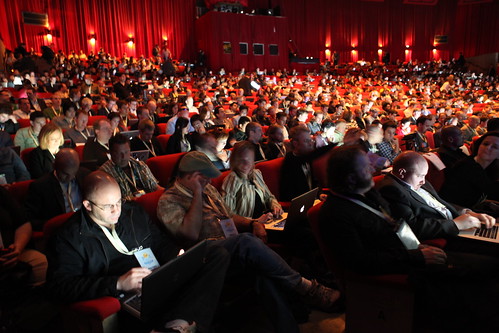
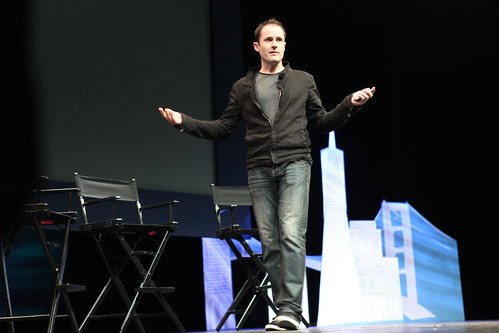
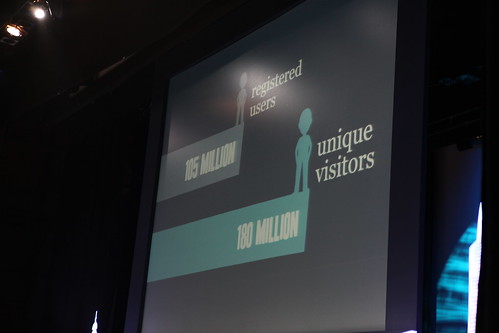




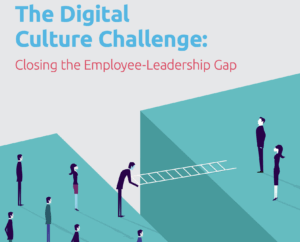
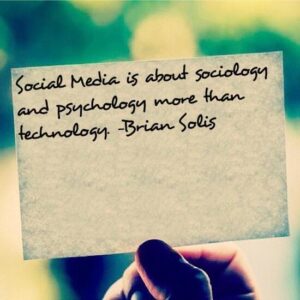


Awesome post Brian, was interested in seeing how the conference went. Surprised at the numbers and some of those other stats. It's showing that Twitter is becoming more and more of a service that people use and are clearly interested in. Looking forward to the next posts!
Thanks Mike…with some of the other announcements made at the event, I think we'll see some notable traction.
I didn't realize until I read your post above and then went back through three URL addresses that “At **the bottom** of every page on Twitter, you can now find a new link called Business. This will take you to a suite of web pages called Twitter 101, A Special Guide.”
At the bottom of every page? Your post implies that this is a new addition (“you can now find…”) by Twitter. Just like the Google screen shot in your post, I'm sure that we all meet people who state, “I don't get Twitter.” Given Evan Williams' acknowledgment that “Getting users from awareness to engagement..is something that we weren’t doing very well,” putting a link to a guide on Twitter at the bottom of every Twitter page is probably not going to help them improve this situation.
Businesses that are focused on attracting more customers don't put a one-word link to their value proposition and guides to their services at the very bottom of their web pages.
Indeed…That content was originally introduced last year to very little fanfare.
https://www.briansolis.com/2009/07/new-media-uni…
Also, much of what you discuss is exactly what many believe is hindering Twitter's growth…I tried to document my experience (as a new user) here:
https://www.briansolis.com/2009/11/the-twitter-s…
Brian, this was a wonderful read and I look forward to the parts 2 and 3 with great anticipation. I just tweeted that I was trying to find the right words to comment appropriately…feeling a bit “tongue-tied”, lol. Your description of Twitter as a “…a living and breathing organism whose characteristics are dictated and personified through our Tweets and the Tweets of those we follow.” says it better than I have been able to in working with clients and colleagues who “just don't get” Twitter. Off to memorize that sentence for future use. 🙂
I accidentally came across your blog and have been reading along. I thought I would leave my first comment. I don’t know what to say except that I have enjoyed reading. Nice blog.
Great Post! As a student I still constantly get other students asking me why I use Twitter and what I get out of it. It's hard to validate it's importance unless they dive in and become a part of the experience themselves. Most of the time I usually encourage them to check it out for themselves and guide them through a few pointers. Most have stuck with it and are continuously surprised by the number of opportunities it has brought their way. Wishing professors in Mass Comm. departments were more involved in the up-and-coming trends. Looks like it's time for the teacher to become to student.
Great write up, for those of us unable to attend. I often talk about the fact that 60% of Twitter users become inactive after 30 days and why. Yes, the public truly does not get it. Brands, however, need to.
It is wonderful to see the important role part we all have in shaping Twitter, what will tomorrow bring??
Thank you for bringing the conference closer!
Thanks for the awesome post. I love Twitter, it has opened up so many opportunities for me as a student, having experienced more contact with PR pros than fellow students who do not tweet. Twitter is the perfect networking platform, but I cannot wait to see what will come along to better it!
I can't believe Twitter has come so far in its short history. “Follow us on Twitter” has become so common and that it doesn't seem right when a company doesn't have that phrase on its website, advertisement, etc. I am curious to see how much farther it expands in years to come.
Well said…it's true!
Another awesome post. I have been one of those who has been on and off with Twitter, trying to find its true purpose and a reason to care. Without thinking about it, I was posting my first Tweet in a couple weeks right after reading this post. You have once again explained a concept that many struggle with in a variety of ways (Follow Me on Twitter, Tweet by Numbers, Twitter: A Cultural Catalyst) and brought it all together with your overall personal analysis of Twitter as an organism. Can't wait to read following parts from this conference.
Cheers!
Brian, have you ever heard Stephen Lewis speak? I did once, and his eloquence has stayed with me, just as your words in this post have touched me. This is a text I know I'll be coming back to for perspective and encouragement as I struggle to learn all the new tools. Although I find it hard, it is also exhilarating to be part of the transformation of communications. It is helping me evolve and I particularly relate to the following para.
“As a noun and a verb, Tweets unlocked and emancipated our inner extrovert and social commentator, easing our concerns over privacy and consequence, instilling confidence through our participation and contribution with followers, responses, retweets, favorites, and ultimately a network of contacts that would prove invaluable in all things we do online and offline.”
I just blogged a few days ago about my early experience with twitter–” peepers and tweeters, mating and muting” after being out on an owl prowl and hearing hundreds of chorus frogs.
Thanks for another insightful and beautifully written post.
While it's amazing that Twitter has grown so much in so little time, I still don't get the twitter phenomena. I mean what does it do for me on a personal level. I understand the need for twitter in social media and online advertising. But for me as an individual. I still don't get it.
It's comforting to know you're not the only person who doesn't get Twitter. That was certainly the case in the early days, but I think more & people have discovered how to use it effectively as a marketing tool.
About one month ago, I was among the many who “don't get Twitter … and still don't.” After digesting so much information and having the pleasure of interviewing Brian this morning, I get it. I SO get it. And the revelations Twitter gave at Chirp may forever be recalled as the day the online advertising paradigm shifted for good. Push marketing is fading, but will remain a part of a good intermodal strategic platform. Yet it is clear that what Twitter, Foursquare and Facebook can do will give such meaningful personalized interaction between a brand and a consumer – and it's only a matter of time before even more dollars get invested in good social media platforms. Absolutely fascinating. Now will someone please explain Farmville … because “I so don't get it.”
Cheers Adam!